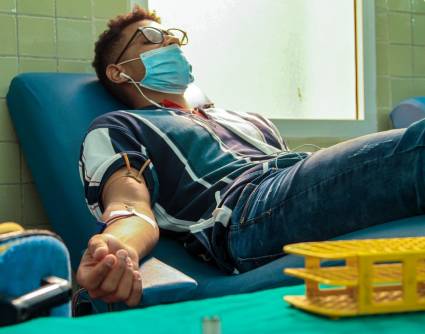
Defining each day who receives or does not receive a blood donation in Ciego de Ávila does not depend exclusively on exact medical criteria, but also the existing stock availability of both provincial hospitals, which for a long time have accounted for the minimum essential to save lives and not enough to eliminate scares and guarantee the quality of care.
At the Doctor Antonio Luaces Iraola Provincial General Teaching Hospital, priorities are established based on the Maternal and Child Program (PAMI), the red codes, the operating room and elective cases. Between protocols and practice there is a gap.
This is confirmed by Danaisy Castillo Roja, head of the Transfusion Medicine service at this care center, with the information that RH-negative blood groups cannot be completed, especially O-negative, considered a universal donor, and the ups and downs to maintain optimal status and quantities of blood destined for PAMI, which must be rotated every five days.
“The last few months have been very tense, many cases have found a solution through the voluntary participation of friends and family. Other efforts have been more complex and people are desperate. The availability of supplies and materials, including transfusion kits and bags, have also limited the work," she emphasized.
It is in the attention to elective cases where she finds some relief, since in the absence of an imminent risk to life they can move the reserves with some ease; however, somewhere along the way it has become the “rule” and not the exception that in order to terminate a pregnancy, bring an operation to a successful conclusion, or stabilize a patient with leukemia or hemophilia, it is necessary for family and friends to donate urgently. The flow is reversed, we already know that.
At the end of February, the Provincial Blood Bank complied with the 800 planned donations, with Baraguá, Chambas and Majagua being the most outstanding municipalities, while the rest failed to comply, even below 50 percent of what was foreseen in the cases of Ciro Redondo, Florencia and Ciego de Àvila.
Marta Méndez Mellor, director of the center, explained that the potential of donors in the province exceeds 5,500 individuals, but some reach the permissible age limit and it is necessary to increase the number of people included in the quota of infrequent groups.
“At the moment, people with negative RH groups identified do not exceed the regulatory time for another donation (three months for men and four for women) and this is one of the difficulties we face today. Intersectional work in the health area with professionals in the sector, as well as the leading role of mass organizations is vital to guarantee the effectiveness of a program that is sustained by voluntariness”.
Undoubtedly, attention to the donor and the ideal diet to recover after the extraction are other of the red points that each of those involved take to pencil point, aware of how much ground has been ceded. What is done badly or halfway is another even deeper debt.
Just like that, the anecdote brought up by Dania Jiménez Rodríguez, secretary of Organization and support for the tasks of the economy in the Provincial Directorate of the Committees for the Defense of the Revolution, could be understood. "Due to lack of timely communication and organization in the field of the 50 donors who had to attend the call in Ciro Redondo, only nine did so and then it was impossible to reorganize the action during the month."
It seems that this is a cyclical problem that we have not been able to put a stop to: in 2019, Invasor described the ups and downs of blood availability and hospital concerns inside and at the end of 2022 there was only good news with over-compliance in 10 percent of the plan of 10,800 donations. In 2023, it has started on the left foot.
